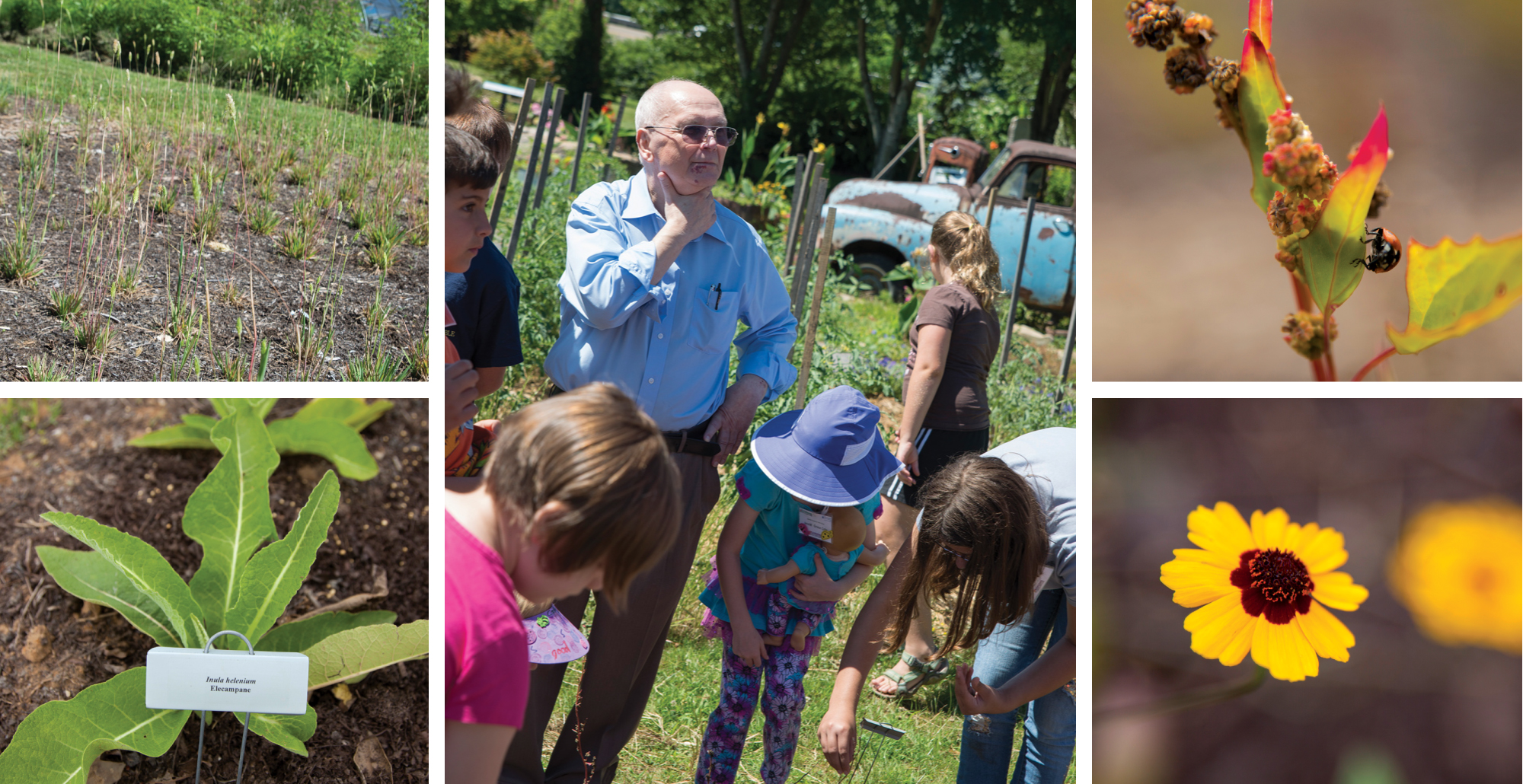By Jennifer Sicking
Photos by Adam Brimer and Jennifer Sicking
The past has found new life in the present at the UT Gardens.
In collaboration with the McClung Museum of Natural History and Culture on the University of Tennessee, Knoxville campus, the gardens on the UT Institute of Agriculture campus feature plants harvested by pre-Columbian Americans.
Sumpweed, anyone? How about goosefoot, maygrass or little barley?
“Farmers and gardeners spend money to get rid of this,” says UT Gardens Director Sue Hamilton, as she gestures to the sumpweed plot.
The plant, a member of the sunflower family, produces an oily and nutritious seed that aided Native American survival for thousands of years.
Gary Crites, McClung’s curator of paleoethnobotany, said early natives could easily pull up sumpweed and beat out the seeds into a basket or on an animal skin. Researchers have found evidence of it being harvested 7,000 years ago and domesticated 4,400 years ago. They can identify domestication as seeds gradually grew larger under human selection and planting.
But sumpweed and most of the other domesticated plants now being grown in the UT Gardens fell into disuse about 500 years ago.
“Our best guesstimate is that corn had become so prominent in diets that plants like this were bypassed,” Crites says.
Another plot at the garden shows the triad that became known as the Three Sisters: corn, beans and squash. Native Americans in the South could grow two crops of corn during the year, which helped keep bellies full, Crites says.
Yet, corn began a downward trend in nutritional diets. After the introduction of corn, he says, researchers begin to find evidence of anemia and tooth decay.
Goosefoot grown in UT’s garden is a close relative of quinoa, today touted as one of the world’s healthiest foods. Domesticated goosefoot has gone extinct in the United States, but it is grown as a field crop in parts of Mexico. The leaves and young shoots can be eaten in the spring, while the seeds provide a starchy fall harvest.
“People may not think it is possible until they look at how people did with plants thousands of years ago, and they did just fine, thank you very much,” Crites says.
As the world population continues to grow, Crites says looking to the past can help feed the world in the future. Planted in sunny, open areas, goosefoot and others could thrive almost anywhere.
“If they’re growing little barley, maygrass and goosefoot at a subsistence level, they’re growing very nutritious food,” Crites says. “It’s nice to think about preserving the species, but look at what we can do to help people.”
For now, the small plots next to the garden’s demonstration test plants won’t go toward feeding the world. Rather, Crites and Hamilton say, they hope to make people aware of possibilities as a few of McClung’s seeds take root in Tennessee soil.
“It’s a wonderful way to educate our visitors, faculty and students with what all we grow for beauty and food,” Hamilton says.



